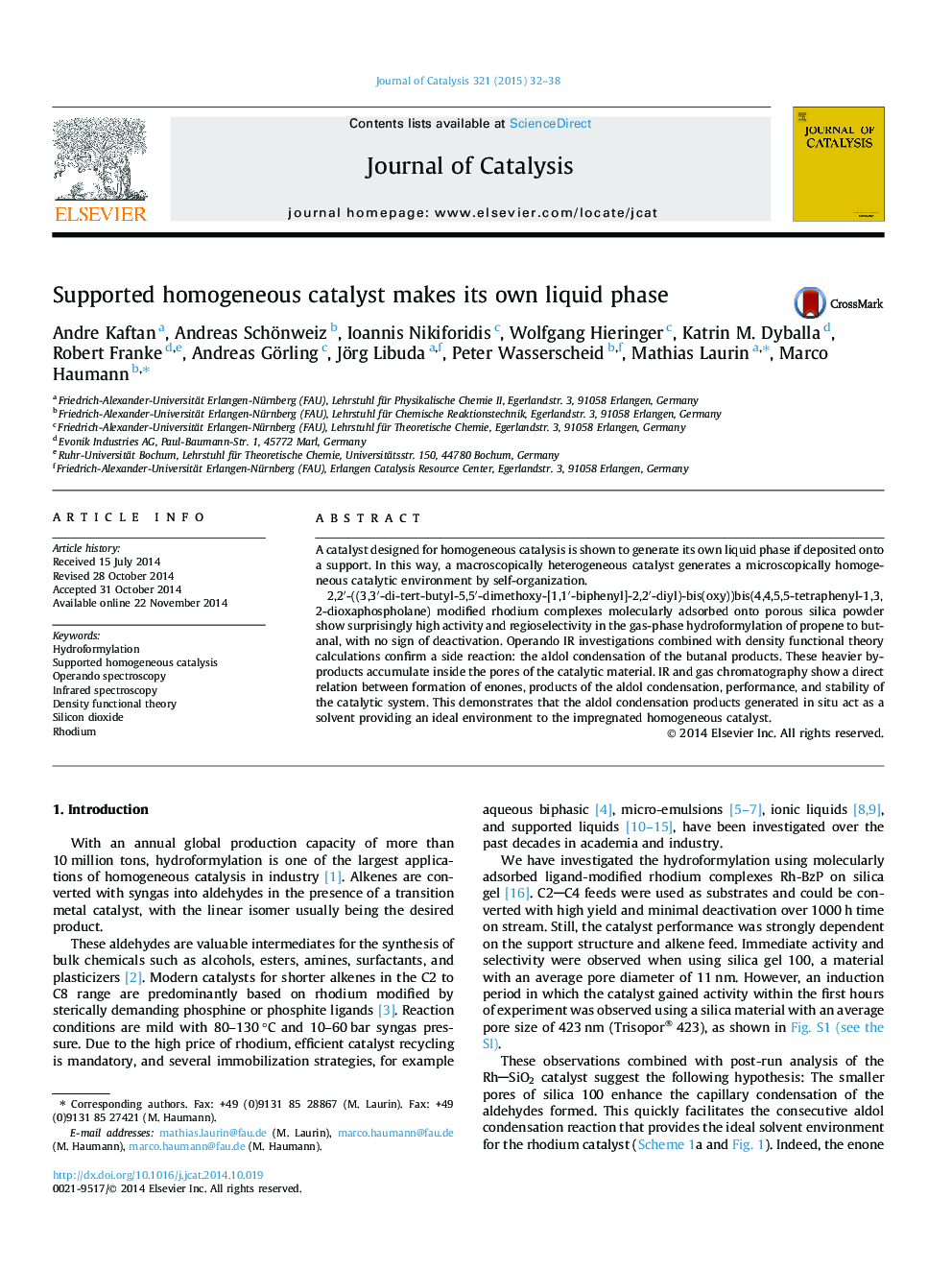| Article ID | Journal | Published Year | Pages | File Type |
|---|---|---|---|---|
| 60923 | Journal of Catalysis | 2015 | 7 Pages |
•A supported homogeneous catalyst is prepared without liquid phase.•A hydroformylation reaction is started and shows excellent performances.•We combine technical chemistry, IR spectroscopy, and theoretical chemistry.•We demonstrate that the catalytic system generates its own optimal liquid phase.•We provide a mechanistic and kinetic understanding of the reactions.
A catalyst designed for homogeneous catalysis is shown to generate its own liquid phase if deposited onto a support. In this way, a macroscopically heterogeneous catalyst generates a microscopically homogeneous catalytic environment by self-organization.2,2′-((3,3′-di-tert-butyl-5,5′-dimethoxy-[1,1′-biphenyl]-2,2′-diyl)-bis(oxy))bis(4,4,5,5-tetraphenyl-1,3,2-dioxaphospholane) modified rhodium complexes molecularly adsorbed onto porous silica powder show surprisingly high activity and regioselectivity in the gas-phase hydroformylation of propene to butanal, with no sign of deactivation. Operando IR investigations combined with density functional theory calculations confirm a side reaction: the aldol condensation of the butanal products. These heavier by-products accumulate inside the pores of the catalytic material. IR and gas chromatography show a direct relation between formation of enones, products of the aldol condensation, performance, and stability of the catalytic system. This demonstrates that the aldol condensation products generated in situ act as a solvent providing an ideal environment to the impregnated homogeneous catalyst.
Graphical abstractFigure optionsDownload full-size imageDownload high-quality image (73 K)Download as PowerPoint slide
